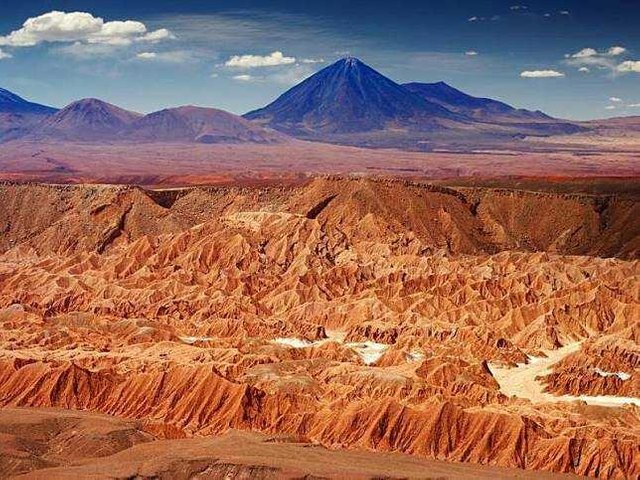Given the Atacama Desert similar to Mars
Want to experience life on Mars?
No need to pay for the expensive space shuttle to Mars. On Earth there is a place so similar to Mars, and scientists have made sure there is life there.
The National Geographic site says that the Atacama Desert in Chile, which stretches along 1,000 kilometers along the Pacific coast, has the features closest to Mars.
As one of the driest, or hyperarid places on Earth, the Atacama Desert may never have been saturated for decades, even for centuries.
This is what makes the wind blow very hard and very dry temperatures in this desert. It is easy to assume there can be no life here.
Julie Neilson, an environmental microbiologist from the University of Arizona, told Science Magazine that we can drive 100 kilometers, and still can not find any grass.
However, a recent study ensures that in this seemingly dry, dry land there is a life waiting for the right moment to flourish.
For the first time, scientists observed microbial life in the driest region of Atacama. Strong bacteria, fungi and microbes have adapted to survive in drought, damaging ultraviolet radiation and very high salts. This discovery shows that this dusty and charred environment is actually an ecosystem.
For the hope of discovering life on Mars, this discovery might be all that.
Scientists led by experts from the Technical University of Berlin, Germany, have found microbes that can adapt to these extreme conditions. These harsh organisms can be an example of how life can happen on Mars.
says that all the pressure that exists in Atacama, is also present on Mars. "Just a little more," he said.
"I've always been fascinated to go to a place where people do not think there's something that can survive and find that life has found a way to make it work," Schulze-Makuch said. "If life can happen in this driest environment, then there is a possibility that the same thing is happening on Mars."
Science Alert site launches that it is not the first time microbes have been detected in the Atacama Desert. But before the biologists argued that these microbes did not last long. They appear, then die slowly.
By 2015, Dr. Schulze-Makuch and his colleagues visited the Atacama Desert, after it rained in the dry desert. They took soil samples from several places there, from the shore to the driest places.
Then they return to the Atacama desert in 2016 and 2017, when it rains have never descended in the desert, and collect soil samples, to see what happens to these microbes when the desert has dried up again.
In a research report published in the journal Proceedings of the National Academy of Sciences, the researchers sequenced all microbial findings, and found DNA that revealed that the wet areas close to Chile's coastline had larger and more varied microbes than more places dry on land.
Experts also see evidence that a molecule called ATP, a cell for storing and distributing energy, also acts as a protective building for cell membranes.
When the surface of the desert re-dries after the rain in 2015, scientists see the level of ATP decline, just as expected to see whether the microbes that get up because of rain have re-hibernated.
Schulze-Makuch says that these findings are evidence of an amazing adaptation of life, to self-preservation, where rain falls sometimes once a decade.
"With only a little moisture, little water, ultraviolet radiation levels and high levels of chemical exposure, life can survive and make the area a habitat, though only temporarily."
However, although experts say the results of this study may help inform the future of life on Mars, Mars is still unfriendly.
The atmosphere on the red planet is much thinner, and no protective magnetic field on the planet makes solar and cosmic radiation able to easily reach the surface. This can damage cells directly, and produce powerful oxidants, including bleaching chemicals.
"These things will finish off organic compounds," said one of the researchers, Samuel Kounaves, who is also a chemist at Tufts University and a former major landing scientist of Phoenix Mars, NASA. "So it's very unlikely there's life on Mars."
Follow me @cekblack
